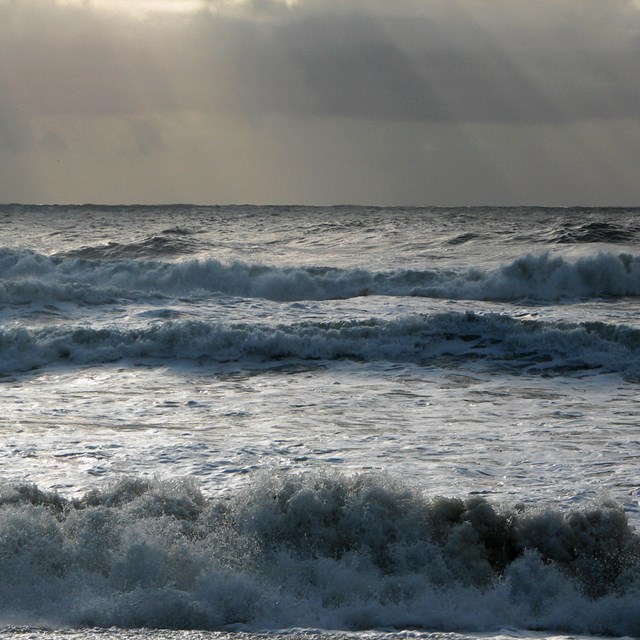
The results of vulnerability assessment should not dictate decision-making. Rather, they are an important tool to guide park management discussions about risk, priorities, and options for adaptation. The National Park Service has worked with various partners to develop—and assess—several distinct methods for conducting vulnerability assessments.
Below you'll find more information and links to a variety of types of vulnerability assessments.
Dig deeper:
-
 NPVuln
NPVulnA project to quantify the vulnerability of national parks and regions to climate change
-
 Coastal Vulnerability Assessments
Coastal Vulnerability AssessmentsClimate change impacts on sea level, storm surge, and shoreline erosion present unique hazards for coastal units of the NPS
-
 Integrated Vulnerability Assessments
Integrated Vulnerability AssessmentsPark management decisions are often interdisciplinary, as these integrated coastal climate change vulnerability assessments attest

A species-specific vulnerability assessment
Download the Karner blue butterfly report
This report brings together existing knowledge on the federally endangered Karner blue butterfly's vulnerability to climate change and applies current adaptation strategies to support a strategic and long-term approach to its recovery and conservation. Using the Resist-Accept-Direct (RAD) framework, this report explores potential responses for managing the butterfly and its habitat in light of climate change and offers guidance on how these responses can be implemented.
A natural resource vulnerability assessment
Download the Apostle Islands reportTo better understand and address key long-term natural resource climate change vulnerabilities, Apostle Islands National Lakeshore collaborated with the NPS Climate Change Response Program, the Northern Institute for Applied Climate Sciences, and numerous tribal, state, and academic partners to develop a broad terrestrial ecosystem vulnerability assessment for the end of the 21st century. This scenario-based assessment, which emerged from a highly participatory process, provides detailed information about observed and projected climate trends and associated vulnerability and confidence determinations for boreal forests, pine barrens, peat swamps and bogs, maritime bluffs, coastal wetlands, and other important park ecosystems. This assessment is useful for Apostle Islands resource management and interpretive staff as well as the park’s many partners.
References
Foden, W. B., Young, H. R. Akcakava, R. A. Garcia, A. A. Hoffman, B. A. Stein, C. D. Thomas, C. J. Wheatley, D. Bickford, J. A. Carr and D. G. Hole. 2019. Climate change vulnerability assessment of species, Wiley Interdisciplinary Reviews: Climate Change, 10:e551.Glick, P., B. A. Stein and N. A. Edelson, Eds. 2011. Scanning the Conservation Horizon: A Guide to Climate Change Vulnerability Assessment, Washington, DC: National Wildlife Federation.
Thurman, L. L., B. A. Stein, E. A. Beever, W. Foden, S. R. Geange, N. Green, J. E. Gross, D. J. Lawrence, O. LeDee, J. D. Olden, L. M. Thompson, and B. E. Young. 2020. Persist in place or shift in space? Evaluating the adaptive capacity of species to climate change. Frontiers in Ecology and the Environment.
Last updated: January 8, 2025
